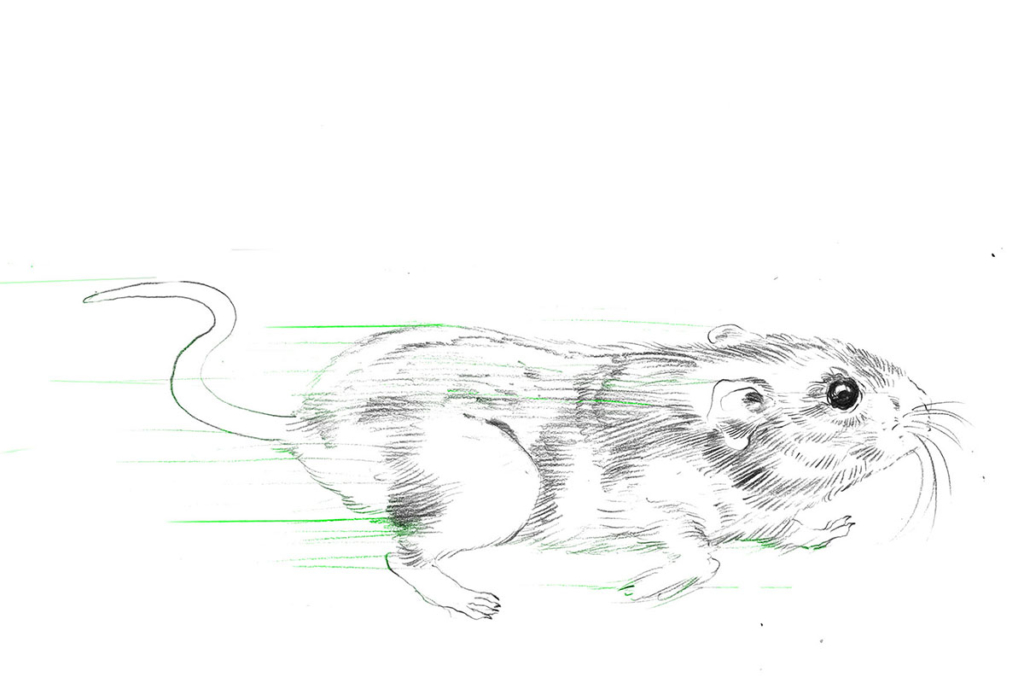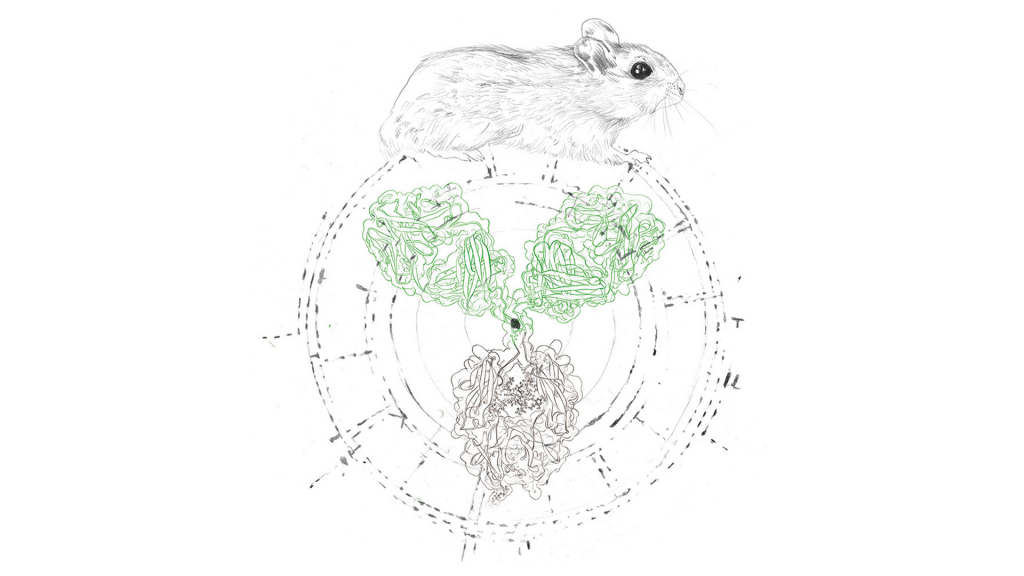The chinese hamster, cricetulus griseus, is best known to people in the biotechnology field for CHO cell lines that are very important and widely used in life science research and recombinant protein expression platforms, e.g. antibody production in CHO-k1 cells.
Not as well known is the fact that these small hamsters are very enjoyable companions for small animal pet owners.
For a change, this article will put the animals, from which the cell lines were derived, into the focus and highlight a few key facts that contribute to their popularity as small animal pets.
The chinese hamster is a small rodent whose native habitat is distributed to northern China and Mongolia. It is related to the Chinese striped hamster (cricetulus barabensis) and the Syrian hamster (Golden hamster), even though its appearance is quite distinct as it seems long and thin with a longer tail, thus appearing more mouse-like than typically hamster-like. It is a desert dweller with a nocturnal lifestyle.
Subscribe to our Newsletter
Get all the latest updates, and learn about our advancements in antibody production.
Subscribe now

The typical size of adult Chinese hamsters is between 7,5 and 9 cm with a weight of 50 to 75 g for grown up individuals. They have an average lifespan of two, up to three years if kept under ideal conditions, which will be discussed in a later section dedicated to Chinese hamsters as pets.
As mentioned above, Chinese hamsters resemble mouses more so than e.g. Golden hamsters. They have a stretched, long body and a relatively long tail of two to three centimeters, whereas other hamsters have a more compact and round appearance with a stubby tail.
Their fur is brown to light brown with a dark stripe on their spine and a lighter belly. A popular variation is the white-spotted Chinese hamster which is an all over lighter greyish-white with a black stripe on the back.
As a nocturnal desert dweller, the Chinese hamster is mostly asleep during the day, but might wake up to feed on grains that it stores in stashes near its burrow.
Its general behavior is shy, cautious and skittish. When brought up as pets and properly trained to be with humans, they are good-natured and tolerate being held in a hand. Chinese hamsters may be kept alone or in smaller groups, but adopting same-sex littermates is generally advised, because a hamster will show territorial aggression.
They will get used to contact with humans but are not capable of developing a relationship or bond with their owners like cats or dogs would.
The Chinese hamster is a member of the hamster subfamily, Cricetinae, along with other popular species of hamster of small size like Roborovski dwarf hamsters, Russian dwarf hamsters and Campbell’s dwarf hamsters.
Their appearance is varied and e.g. their size depends a lot on their nutrition, as animals grown up in captivity are usually larger, since they enjoyed more nutritious foods than their smaller wildlife cousins. Additionally many variants with unusual fur coloration ranging from dark to bright grey and white have been bred.
Categorically, the Chinese hamster can be distinguished by its tail, which is longer than their fellow members of species.
The chinese hamster is a very convenient organism for modern biotech applications. This is mostly due to the fact that its biochemical machinery is relatively close to human’s, as they’re both mammals and share many crucial cellular traits.
Therefore, many artificial proteins that are expressed in chinese hamster cells are of low immunogenicity when administered to humans as drugs. If these protein drugs were produced in bacterial or yeast cell culture, they would lack so-called post-translational modifications and hence be vastly inferior.
Prior to the promotion to laboratory animal, Chinese hamsters were considered pests in the fields of China. The first reports of their laboratory use in infectious disease research are dated to 1919, when mice and rats were scarce as experimental animals.
In 1948, a Chinese hamster colony was smuggled out of Mainland China, just before the Maoists founded the People’s Republic of China, and played an important role in diabetes research.
In 1969, ovaries were removed from female chinese hamsters and subsequently the Chinese Hamster Ovary cell lines (CHO cells) were developed. These cell lines were of utmost importance in the research leading to breakthrough medications like Herceptin, Humira, Factor VIII and many more.

Nowadays, Chinese hamsters play a crucial, but conveniently indirect role, in monoclonal antibody production and recombinant antibody. The biochemistry of their cells is sufficiently close to human cells to produce proteins with high effectivity and low immunogenicity, which is heavily used in biotech applications.
Since the development of CHO cells and their use to express artificial proteins after introduction of engineered nucleic acids (DNA or RNA) into their genome, actually no live Chinese hamsters are involved. These mammalian cell lines are split and multiplied fully independently from laboratory animals. Learn more about CHO cells antibody production.
Aside from specialty animal experiments, probably most domesticated Chinese hamsters are kept as pets in Northern America, Europe and China.
Keeping a Chinese hamster as a pet is a relatively low-maintenance activity. Taking care of these key aspects will keep your small pet healthy and happy:
The chinese hamster requires a minimum enclosure size of 60 cm x 30 cm and a height of 30 cm, but keep in mind that enough space is necessary for exercise and health. Therefore the general recommendation is the biggest cage you can afford and store.
Cage options are a plastic tub with wire top with adequate bar spacing or glass or plastic boxes similar to an aquarium. Your pet will need a proper hideout with regular substrate changes each week.
In its natural habitat, the chinese hamster feeds on a broad range of plants, grains, insects and nuts. Pet hamsters thrive on commercial hamster food with mineral and vitamin enrichments.
Additionally, chinese hamsters love a daily treat of fresh fruit as supplemental food. Of course, chinese hamsters require access to fresh water, either from a small bowl or a small animal water bottle.
A yearly visit to a specialized veterinarian for a routine checkup is generally advised, even if your pet is healthy.
Common illnesses are airway and digestive system infections, for which the risks increase if held in unsanitary conditions. Symptoms include lethargy, weight loss, and sneezing, wheezing or diarrhea, respectively.
A veterinarian will probably prescribe antibiotics and advise you to thoroughly clean and sanitize the cage. Sick animals should be separated from healthy ones until they are entirely symptom-free.
It is worth noting that keeping a Chinese hamster is not allowed everywhere. E.g. several US states actually prohibit possession without special permits.
After sorting out the legal side of chinese hamster ownership, you need to think about whether you prefer a single hamster or a group of animals. In the latter case, you are advised to adopt same-sex littermates to avoid territorial aggression and/or becoming a chinese hamster breeder unknowingly.
Recurring costs of keeping Chinese hamsters are mostly due to their food and cage substrate. They are relatively inexpensive pets.
Yes, they are definitely enjoyable pets with the advantage of low expenses and low maintenance. For some persons a probable disadvantage may be the lack of bonding to the owner
The actual costs of keeping Chinese Hamsters are going to vary with regions. The expenses for hamster food and substate changes are comparatively small. Do not forget about the yearly visit to the veterinarian.
No, a Chinese hamster is not a mouse, even though they appear more mouse-like than hamster-like because of their long thin bodies and long tails.
An average adult chinese hamster weighs about 50 to 75 g with a length of 7,5 to 9 cm.